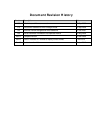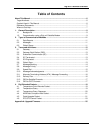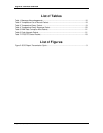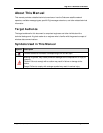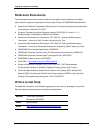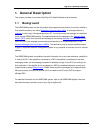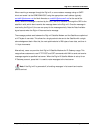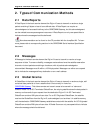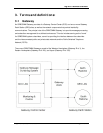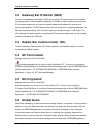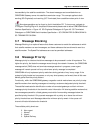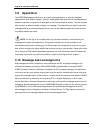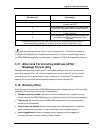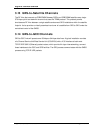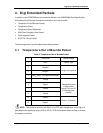
Digi m10 Technical Overview v 1.20
Digi International, Inc. © 2009
Page 11 of 26
2. Types of Communication Methods
2.1 Data Reports
A Data Report is the basic service element the Digi m10 uses to transmit or receive a single
packet containing 6 bytes or less of user-defined data. A Data Report can require an
acknowledgment of successful delivery to the ORBCOMM Gateway, but this acknowledgment
can be omitted to save space segment resources. A Data Report can only use speed dials to
indicate where the message should be delivered.
More documentation can be found on the CD provided with the JumpStart Kit. To learn
more, please refer to corresponding sections in the ORBCOMM Serial Interface Specification
document.
2.2 Messages
A Message is the basic service element the Digi m10 uses to transmit or receive a longer
sequence of data. To ensure reliability, messages are transferred over the satellite reservation
channels via short packets containing a checksum, with all packets acknowledged or
retransmitted. Messages must fit within a 1024-byte packet. Messages can either use a speed
dial to indicate the message delivery destination or an e-mail address.
2.3 Global Grams
A GlobalGram is the basic service element the Digi m10 uses to transmit or receive a single, self-
contained data packet to or from a satellite that is not currently in view of an
ORBCOMM Gateway. This allows remote and oceanic areas to be served in a “store-and-
forward” mode. For an SC-Terminated GlobalGram, the relaying satellite stores the data packet in
memory and transmits it upon request from the destination Digi m10. An SC-Terminated
GlobalGram contains 182 bytes of user data. For an SC-Originated GlobalGram, the satellite
receives the GlobalGram from the Digi m10, acknowledges it and archives it in satellite memory
until the destination ORBCOMM Gateway establishes contact with the satellite. An SC-Originated
GlobalGram contains 229 bytes of user data. A Global Gram can only use speed dials to indicate
where the message should be delivered.



